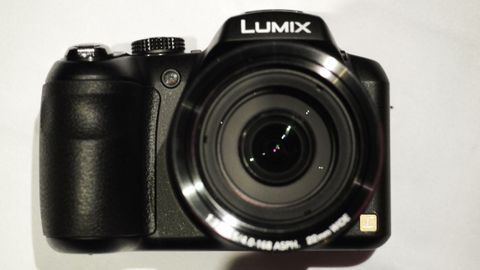Early Verdict
Pros
- +
42x zoom
- +
Easy to use
Cons
- -
No viewfinder
- -
Fixed screen
- -
Little control over exposure settings
Why you can trust TechRadar
Panasonic launched the LZ30 last year at CES, and this time around it has introduced its replacement, the LZ40.
Whereas the LZ30 is a 35x optical zoom bridge camera with a 16.1 million pixel sensor and an equivalent focal length of 25-875mm, the LZ40 has a 20MP sensor and 42x zoom lens that produces a focal length equivalence of 22-924mm.
This change in zoom range makes the new camera more versatile, being better able to shoot in cramped interiors (provided distortion is adequately controlled) and able to pick out even more distant details. It should make it a popular choice for family days out.
Increasing the pixel count to 20 million should also enable the camera to record more detail as long as noise is carefully controlled.
Another change made with the LZ40 is a switch away from AA batteries to a rechargeable lithium ion battery, which can be charged in-camera via USB.
Panasonic has also boosted the power of the flash to a guide number of 8.8 at ISO 100.
Build and handling
Like the LZ30, the LZ40 is a fairly large bridge camera with a mini-SLR design and a good-sized grip, making it comfortable to hold.
The natural inclination with cameras shaped like the LZ40 is to hold it to your eye when taking photographs, but as there is no viewfinder images must be composed on the LCD screen.
This 3-inch, 460,000-dot device provides a reasonably good view, but it's a fixed unit so it can't be angled to aid viewing from awkward angles. We'll have to wait until we can use a full-production sample outdoors to find out how it copes in bright light.
The FZ40 is intended to be a simple camera to use with a mode dial on its top-plate providing a route to a collection of largely automated exposure modes. These scene and Creative Control modes are supplemented by a slightly more advanced program mode as well as manual mode. However, there are only two aperture settings available at any focal length, so there isn't a great deal of control.
Pressing the Exposure button on the back of the LZ40 brings up the exposure settings options, which can then be adjusted via the navigation controls.
A sprung lever around the shutter button is provided for adjusting focal length and on our pre-production sample it was responsive.
Performance
We have yet to examine any images from a full-production sample of the LZ40 so we can't draw any firm conclusions on the quality of the images that it produces. However, we know that Panasonic produces good exposure and white balance systems, so we can at least anticipate correctly exposed images with good colour.
The pre-production LZ40 that we used focused quickly, even in the fairly low artificial light that we examined it in. It will be interesting to see how it performs in better light outdoors. The combination of a fast AF system and a huge focal length range would make the LZ40 a good option for family holidays and fun days out.
It will be interesting to see whether image quality is maintained across the full focal length range when we receive a final production sample of the LZ40. We will also examine images carefully for noise and check how the camera performs in low light as well as more normal shooting conditions.
Early verdict
Although the compact camera market is declining, there is still interest in the bridge camera and superzoom area, since these cameras offer something that smartphones don't – huge zoom range and comfortable handling.
The LZ40 is designed to be a low-cost entry into bridge cameras and looks a like an enticing option. It's very easy to use and has a good, comfortable grip with all of the controls within easy reach. What we don't know yet is what its image quality is like and for that we will have to wait until we get a full-production sample.
What is a hands on review?
Hands on reviews' are a journalist's first impressions of a piece of kit based on spending some time with it. It may be just a few moments, or a few hours. The important thing is we have been able to play with it ourselves and can give you some sense of what it's like to use, even if it's only an embryonic view. For more information, see TechRadar's Reviews Guarantee.

